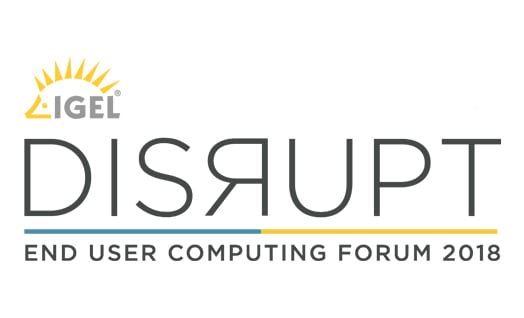IGEL Blog
Endpoints Deliver High-Application Performance | IGEL Endpoints
Delivering High-Application Performance via Endpoints
In the past IT looked at endpoints with little expectation beyond doing much more than the simplest graphically intensive task, perceiving that their performance fell short of the PC. Technology and the marketplace have since changed drastically. Virtualization and dramatic improvements in remote display technology have enabled a more secure endpoint approach to deliver an end user experience that more than rivals that of the traditional PC desktop.
What’s more, when we think about endpoint technology as software, we realize that we have an option to repurpose existing desktop PCs, laptops and other devices, extending their useful life as software-defined endpoints.
Recent industry reports estimate the global digital transformation market to reach almost $432 billion by 2021 as enterprises employ social media channels, mobile applications and other digital technologies to compete better and more closely engage the consumer. Digital transformation is evolving the enterprise to one in which high performance applications are now the norm as organizations use video, graphics and other information intensive multimedia to populate these new channels of engagement.
Endpoints as Cost Effective Alternatives to PC’s
Digital technologies, and high-performance applications, create further pressure on IT staffs which are grappling with PCs that are past their optimum performance. As a result, IT is looking at alternatives like endpoints for swapping out PCs and investing in more costly equipment that will inevitably have an expiration date. One solution is to build on virtualization solutions that incorporate high-performance endpoints.
In terms of the marketplace, IT wants a nimble environment that supports a mobile workforce using multiple different devices in a single day, often at different locations. The endpoint of today is a solution that supports this mobile, digitally-centric user.
Endpoints Now Release Dependence on PC’s
Endpoints can now deliver high-application performance and functionality for IT that enables digital transformation and releases the dependence on PCs. Here are a few considerations:
- VIDEO AND GRAPHICALLY-INTENSIVE APPLICATIONS
A key element to this delivery is the adoption of industry-standard codecs for remote display technology. Citrix HDX, VMware Blast Extreme, Microsoft RemoteFX and NoMachine NX all leverage industry-standard H.264 video compression, which can in turn be hardware-accelerated, yielding a high-fidelity desktop and/or application experience to the end user via endpoints.
- ADVANCED GRAPHICS PROCESSING
Advanced graphics processing units (or GPUs) provide the compute power in the data center to rapidly calculate and provide display instructions for remote display devices. Today’s endpoints, which are built on System on Chip technology, provide the ability to efficiently decode remote display instructions using dedicated graphics media processors, to deliver an immersive, high-quality user experience to virtual desktops and apps, for both mobile and on-site workers.
- IMAGE QUALITY CONTROL
Audio and video applications must have codecs that are “lossless,” enabling images to be compressed, and decompressed without a loss in quality. Endpoints should support MP3, WMA and AAC for audio; WMV (VC1) | H264 | MPEG-4 | MPEG-2 for video.
- STREAMLINED MANAGEMENT
Unlike the traditional PC, endpoints are fast to set up, easy to manage and unique in their security design. They can be centrally updated, remotely controlled and even switched off and on by a centralized administrator, making them ideal for distributed worksites or remote users. As many as 100,000 devices can be managed from a single console, significantly lowering management costs and simplifying policy control.
- CONVERSION SAVINGS
With hardware and software-defined endpoints offering advanced performance, it’s now worth considering turning those dinosaur PCs and notebooks into endpoint devices, whether replacing those devices with traditional endpoint hardware or extending the useful life of existing IT assets and rejuvenating the performance of the end-user experience.
Endpoints Can Support Today’s Digital Technologies’ Demands
Endpoint technology has advanced to the point it is actually a better match for today’s organizations who need to stay one step ahead of digital transformation in order to succeed. Endpoints, with high-application performance functionality, can support the myriad of digital technologies that come with digital transformation, and they are uniquely equipped to respond quickly, freed from the slow, expensive process of swapping PCs.
Jeff Kalberg is Technology Evangelist and Senior Presales Engineer at IGEL Technology.
Note: This article initially appeared in APM Digest on January 12, 2017.


